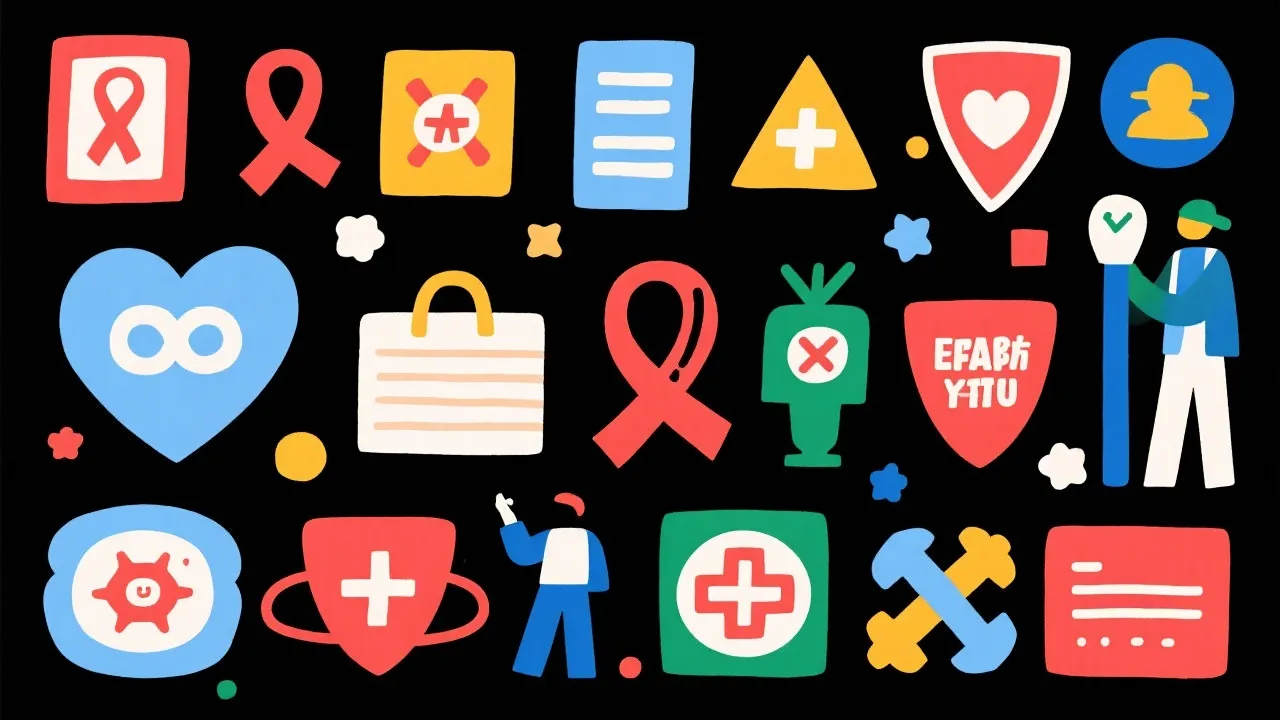This guide explores the dual approach of behavioral and biomedical combination strategies for HIV prevention. These strategies are crucial as they focus on individual and societal actions, as well as medical advancements, to minimize the transmission and impact of HIV, especially in at-risk populations. The importance of comprehensive prevention measures is underscored by ongoing challenges in global health.

Understanding HIV Prevention
The fight against HIV has been a global public health priority for decades. With over 38 million people living with HIV as of recent estimates, developing effective prevention strategies is crucial. A primary method of tackling HIV involves a combination of behavioral and biomedical strategies, each offering distinct approaches to reducing risk and spread. As awareness of HIV grows and healthcare systems evolve, the need for multi-faceted prevention methods has become increasingly evident. This means not only implementing effective interventions but also understanding the socio-economic factors that influence HIV transmission globally. Improving overall health literacy and providing accessible healthcare solutions are essential components of any comprehensive strategy to combat this epidemic.
Behavioral Strategies
Behavioral strategies emphasize altering individual and community actions to reduce the transmission of HIV. Key components include:
- Education and Awareness: Initiatives focus on informing the public about HIV transmission methods and safe practices, including safe sex and needle exchange programs. Public health campaigns that have been successful often utilize various media platforms to reach different demographics, ensuring that information is accessible to all segments of society.
- Risk Reduction Counseling: Counseling services aim to help individuals understand and manage their risk factors by adopting safer behaviors. Tailored counseling can address specific concerns, build personal strategies to reduce risk, and help individuals navigate their environments, which may complicate prevention efforts.
- Behavior Change Interventions: These programs often include motivational interviewing and cognitive-behavioral strategies to encourage protective behaviors. Acknowledging the unique contexts and challenges faced by high-risk populations is vital; for instance, young people may respond differently to messages about HIV compared to older demographics.
Specific Behavioral Interventions
While the broad strategies of education and counseling are essential, there's a need to delve deeper into specific interventions that have shown promise in various contexts:
- Peer Education Programs: Utilizing individuals within communities as peer educators has proven effective. Peer educators can dispel misinformation, share personal experiences, and foster an environment of trust that encourages individuals to seek help and participate in prevention efforts.
- Social Marketing Campaigns: Utilizing social marketing principles, campaigns can be designed to change social norms and encourage safer sexual practices. These campaigns often use targeted messages, engaging visuals, and relatable stories to resonate with the audience.
- Structural Interventions: Addressing the broader social and economic structures that contribute to HIV transmission is crucial. For example, improving access to social services, housing, and mental health support can greatly reduce vulnerability to HIV.
Biomedical Strategies
Biomedical strategies involve medical interventions that directly reduce infection risk. Key elements include:
- Pre-Exposure Prophylaxis (PrEP): A daily pill that significantly reduces the risk of acquiring HIV when taken consistently by those at high risk. Studies illustrate that when taken as prescribed, PrEP can reduce the risk of infection by up to 99%, making it one of the most effective tools in prevention. However, adherence remains a challenge, and education on its importance is crucial.
- Post-Exposure Prophylaxis (PEP): An emergency strategy involving antiretroviral treatment after potential exposure to HIV. PEP must be initiated within 72 hours of exposure, making timely access to healthcare essential for its effectiveness. Programs must ensure that individuals are informed about how to seek PEP in emergency situations and that services are readily available.
- Antiretroviral Therapy (ART): Used to lower viral loads in HIV-infected individuals, reducing the chance of transmission. By achieving an undetectable viral load, an HIV-positive individual effectively eliminates the possibility of sexual transmission to HIV-negative partners, a concept referred to as "Undetectable = Untransmittable" (U=U).
- Medical Male Circumcision: Evidence shows circumcision can reduce heterosexual men's risk of acquiring HIV by approximately 60%. This strategy, particularly in regions with high HIV prevalence, is part of a broader public health initiative that also covers education about safe practices.
- Vaccines: Researchers are continuously working on developing a viable HIV vaccine to offer good prevention. Although no vaccine has been approved yet, clinical trials are ongoing with several leading candidates. A successful vaccine would represent a significant breakthrough in the prevention of HIV globally.
Integrating Behavioral and Biomedical Approaches
Given the complexity of HIV transmission, no single strategy suffices. Integrating behavioral and biomedical strategies provides a comprehensive framework for prevention:
- Counseling can enhance adherence to PrEP and ART. Behavioral insights can be used to develop personalized plans for individuals, building motivation and commitment to treatment regimens.
- Educational campaigns can complement vaccination efforts and increase acceptance. In particular, culturally sensitive communication aids in overcoming resistance to new medical interventions.
- Community-based interventions can encourage widespread behavioral changes and support biomedical uptake. Engaging communities in the development of these interventions can enhance ownership and effectiveness.
Specific Integration Examples
Several programs worldwide exemplify the successful integration of these strategies:
- The "Test and Treat" Strategy: Coupling routine HIV testing with immediate treatment initiation for those diagnosed with HIV is an effective approach being implemented in various regions. This not only assists in managing the health of individuals but also curbs the potential for further transmission.
- Peer Navigators: In many urban settings, peer navigators play a crucial role in helping individuals access both biomedical interventions like PrEP and link them with behavioral strategies such as counseling and support groups.
- Comprehensive Clinics: Facilities that offer HIV prevention services—including PrEP, testing, contraceptive services, and mental health support—demonstrate improved health outcomes. These clinics provide a one-stop-shop for individuals seeking to protect themselves and their partners.
Challenges and Future Directions
Despite the availability of effective prevention tools, challenges remain. These include access disparities, cultural barriers, and the persistence of stigma and discrimination against affected populations. Future efforts must prioritize:
- Equitable Access: Ensuring all at-risk individuals have access to prevention tools regardless of socio-economic status is paramount. Policymakers must focus on allocating resources and creating subsidized programs to ensure affordability and accessibility.
- Overcoming Stigmatization: Fostering inclusive policies and environments to encourage individuals to seek prevention and treatment services without fear. Efforts should focus on educating communities and reducing discriminatory practices, particularly among vulnerable groups such as men who have sex with men, sex workers, and drug users.
- Innovative Research: Continued investment in vaccine research and novel biomedical interventions to close existing prevention gaps. Novel research must focus on understanding and responding to the evolving landscape of HIV transmission and risk factors.
HIV Surveillance and Monitoring
Another dimension to consider in the fight against HIV is the importance of surveillance and monitoring systems. Effective tracking of infection rates and the demographics of those infected can provide essential data to improve prevention strategies:
- Data Collection: Comprehensive data collection allows for the identification of hotspots and the demographic shifts in HIV infection rates. This information is critical for public health officials as they plan and allocate resources where they are most needed.
- Trend Analysis: Analyzing trends over time helps identify the effectiveness of existing prevention programs and where improvements are needed. Continuous evaluation can lead to adaptations in strategies, ensuring that they remain relevant and impactful.
- Community Engagement in Surveillance: Involving communities in the data collection process can enhance trust and ensure that data reflects real-world dynamics. Community-based participatory research empowers individuals to share their experiences and contribute to solutions.
Comparison Table: Biomedical vs. Behavioral Strategies
| Aspect |
Behavioral Strategies |
Biomedical Strategies |
| Focus |
Behavior change, Education |
Medical interventions, Medications |
| Examples |
Risk Reduction Counseling, Awareness Campaigns |
PrEP, PEP, ART, Vaccines |
| Benefits |
Empowerment, Sustainability |
High Efficacy, Rapid Risk Reduction |
| Implementation Challenges |
Cultural Acceptance, Behavior Change |
Access, Affordability |
| Long-term Goals |
Community Engagement, Cultural Shift |
Universal Treatment, Effective Vaccination |
FAQs
- What is the primary goal of HIV prevention strategies?
The primary goal is to reduce the incidence and transmission of HIV through various proactive measures. This involves not only the use of biomedical tools but also fostering an environment where individuals feel empowered to take charge of their health.
- Why combine behavioral and biomedical strategies?
Combined strategies maximize prevention efficacy by addressing multiple aspects of risk and protection. Understanding that decisions about health are often influenced by social, economic, and behavioral factors ensures a more holistic approach.
- Who can benefit from PrEP?
PrEP benefits individuals at high risk of HIV exposure, such as those with HIV-positive partners or high engagement in high-risk activities. Importantly, education about PrEP is necessary to demystify the treatment and encourage higher uptake rates.
- How does ART help in HIV prevention?
ART helps by suppressing the viral load in HIV-positive individuals, reducing their ability to transmit the virus to others. The success of ART in preventing transmission underlines the importance of adherence to treatment regimens.
- Is there an HIV vaccine available?
Currently, there is no approved vaccine, but research and clinical trials are ongoing. The HIV vaccine landscape is dynamic, with several promising candidates showing potential effectiveness in ongoing studies.
In conclusion, integrating behavioral and biomedical strategies forms a robust approach to HIV prevention. Continued innovation and commitment to equity are pivotal in conquering the global HIV challenge. Working collaboratively across sectors, integrating community voices, and investing in sustained public health infrastructures will inform the future of HIV prevention efforts. By prioritizing accessibility, research, and education, we not only aim to reduce transmission rates but also to foster healthier communities that are resilient in the face of enduring public health crises.









